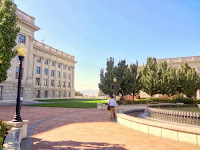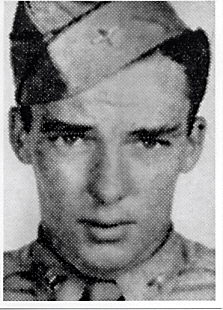Just because it was generally ignored by the elite media, does not mean it was not important lessons.
When my older son went to school at West Virginia Wesleyan, I saw the Elk River. Just magnificent. And if a river that large can be polluted that fast, we need to pay attention to the lessons this spill offers.
When my older son went to school at West Virginia Wesleyan, I saw the Elk River. Just magnificent. And if a river that large can be polluted that fast, we need to pay attention to the lessons this spill offers.
Glen Meder, a clean water expert, has done so. He offers 10 lessons of the West Virginia chemical spill and water contamination story below. Well worth a read and use.
He gives Webinars about how to create and maintain a supply of clean water. I've heard them and they are excellent. Here is a link for one:
Click for Greg Meder Water Webinar
Click for Greg Meder Water Webinar
10 Things We Can Learn From the West Virginia Chemical Spill
If you have been paying attention to the news lately, you are aware that there was a massive chemical spill in West Virginia. Over 300,000 people along the Elk River were told not to drink their water, brush their teeth or take showers. This was a serious incident that could happen anywhere at any time, so it’s important that we learn some important lessons from this event.
Lessons from the West Virginia Chemical Spill
LESSON #1:
Emergencies, by definition, happen by surprise so BE PREPARED! If an emergency strikes and you are not prepared, your health could be at risk, you will be at the mercy of government response and you could find yourself in a very scary situation. It’s human nature to procrastinate, but learn your lesson and prepare today.
LESSON #2:
Water is crucial for life. You will never understand how vital water is until you don’t have it. No other preparation matters if you don’t first ensure a supply of safe water. A lack of safe drinking water is one of the primary causes of panic. People NEED and MUST HAVE water. It’s a fundamental biological need. Rational thought goes out the window because your body demands it. By being prepared, you keep yourself out of panic mode and are able to stay calm and collected. Having a calm state of mind allows you to react properly to a situation, and it allows you to be a calming voice in a troubled time.
LESSON #3:
An emergency is followed by a period of uncertainty. There was (and still is) confusion about the chemical spill because there is very little data on the chemical 4-methylcyclohexane methanol, or MCHM. Believe it or not, there has been very little, if any, toxicity testing done on this chemical. Quite simply, no one knows how toxic the chemical is or what the long-term health effects are.
LESSON #4:
YOU DON’T KNOW WHAT IS IN YOUR WATER! The company did not notify the government that a leak had taken place even though they knew that it had happened. So how did we know that there was a leak? A concerned citizen notified the government of a licorice-smell in the river, which was then investigated. If this person hadn’t taken action, people may not have ever known. It is also true that if this chemical had no odor our hero citizen would not have smelled it to raise the alarm. The fact is, however, this type of incident happens quite often.
LESSON #5:
The government ALWAYS tries to downplay the danger. One of the scariest things for a government (all governments) is a highly concerned, or even panicked populous. This time was no different, because they told everyone that the danger was over far too early (in my opinion). Another dramatic example happened after the Fukushima nuclear reactor exploded in Japan, launching thousands of pounds of radioactive waste into the air. When this happened, the Japanese government declared that nothing was wrong and that the reactor had not exploded, even though people could see that the building was gone! They continued this lie for well over a month before letting the truth out in little bite-sized pieces.
LESSON #6:
Media attention dies quickly, but that doesn’t mean that the danger is over. The WV chemical spill happened a little over a week ago, but the people living there will be dealing with this for a long time. Again, there is very little known about this chemical, but what we do know is that it is an organic chemical, which can be some of the most toxic types of chemicals. Dioxin for example, which is another organic chemical, is one of the most toxic substances on the planet, and it doesn’t simply go away. It stays in the environment for long periods of time and can cause long-term illness.
LESSON #7:
There are different types of contaminants that can be in water, and they need to be treated differently. For example, if your water is contaminated with dangerous bacteria, you should not rely on a carbon filter in an emergency situation. Boiling alone is very effective for killing bacteria, but it actually concentrates most chemicals. Thus you need to be aware of the situation and knowledgeable about water treatment.
LESSON #8:
It’s not just about drinking water. Many contaminants, especially organic chemicals (such as the one spilled in WV) can be dangerous to touch. This means that you have to be careful with brushing your teeth, washing your hands, cooking, showering and even washing your clothes.
LESSON #9:
One of the first preparations that you need is a two-week supply of bottled water stored in your house. Store one gallon per day per person, of which ½ gallon should be used for consumption, and ½ gallon for washing and hygiene. You should also store extra water for people who will be depending upon you (your children, loved ones, neighbors, etc). In addition, you should have a good emergency water filter, an emergency water distiller, and a permanent, day to day water purifier (I recommend a good water distiller).
LESSON #10:
You need to have a deep understanding about water, water contamination, and water treatment methods! It’s not enough to simply buy a water filter (or even a water distiller) and think that you are prepared.
How do you assess a situation? How do you determine the best process for treating water? Do you know how to properly store water?
How do you protect your family? The best way to gain this deep understanding is to attend a new free webinar that I am hosting on January 30th at 7pm (click here to register).
This is a new webinar, so even if you have attended one of my webinars in the past, I will present a lot of new information for you… and all participants will receive two free gifts; a free water preparation check-list and a free e-book, both of which will help you be prepared for an emergency.
“Glenn Meder is one of the leading experts on water in an emergency situation and is the designer of the Survival Still emergency water distiller.”




































































































